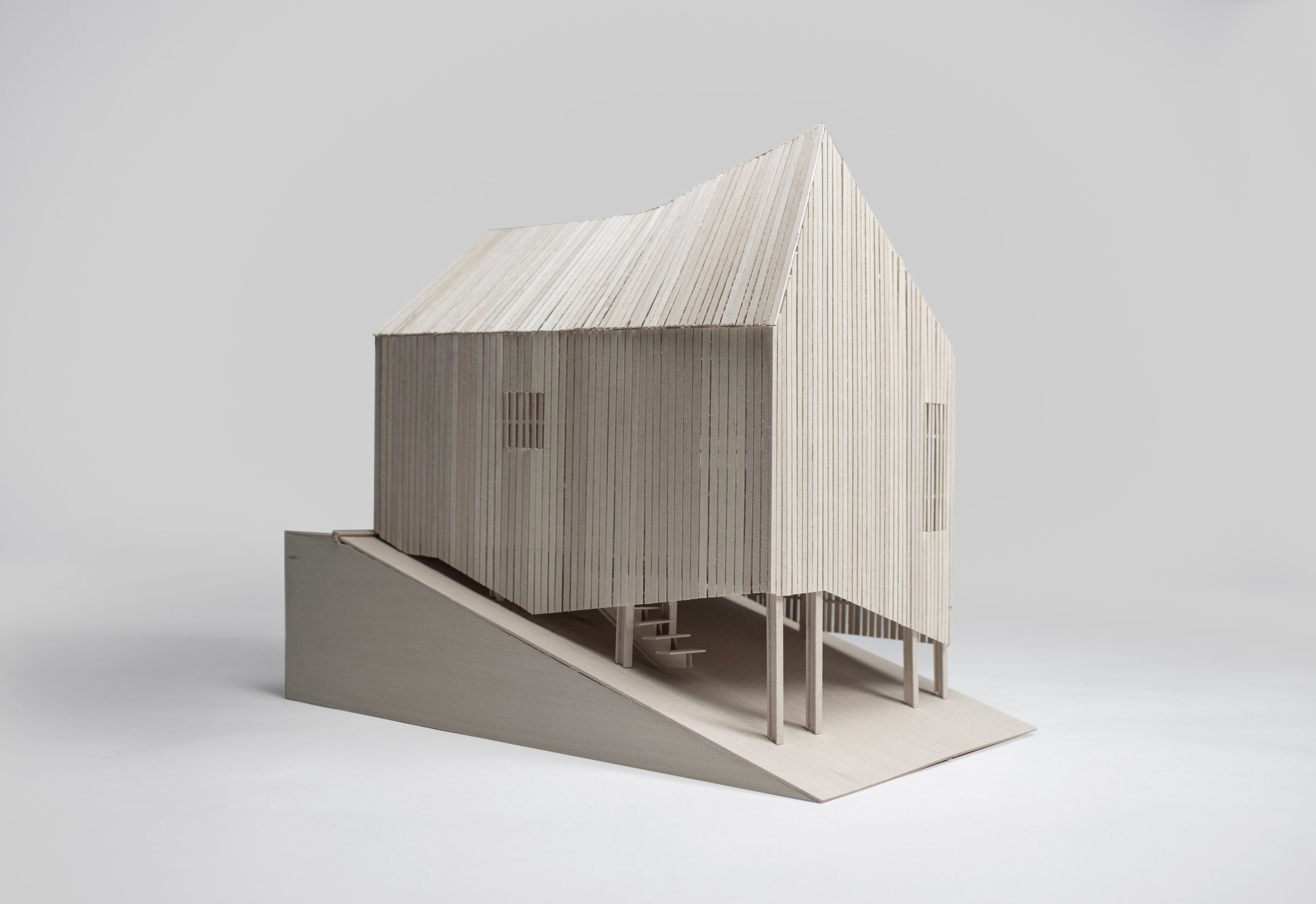CARPORT
2022
The Carport serves as a roadside shelter to avoid traversing up and down the client’s steep terrain by car during winter months. Designed as a minimal enclosure that nestles itself within the existing tree canopy, the project questions typical material acquisition and building practices by leveraging close-to-hand resources within its immediate context.
While wood is considered a sustainable material, our current rate of material consumption outpaces the ability of many North American industrial forests to properly mature. Combined with ongoing environmental issues, such as the Emerald Ash Borer, our habits of consumption result in a continually diminishing forest stock and are in need of a change in practice.
Working with a local forestry expert, 23 trees throughout the client’s property were identified as a potential resource due to their existing condition as either dying, dilapidated and at risk to healthier trees on site, or potential risk for the Emerald Ash Borer. With a close-to-hand material resource available, an onsite process of fabrication and assembly was developed in favor of exporting the trees to an offsite facility utilizing the typical material flow process for manufactured lumber.
This simple reimagining of a material flow process aims to work with skills provided by a number of local experts while also reducing the project’s carbon footprint, stimulating the local economy, and forming lasting partnerships. All sustainable strategies for a more resilient future.
Typical Material Flow
On-Site Material Flow






